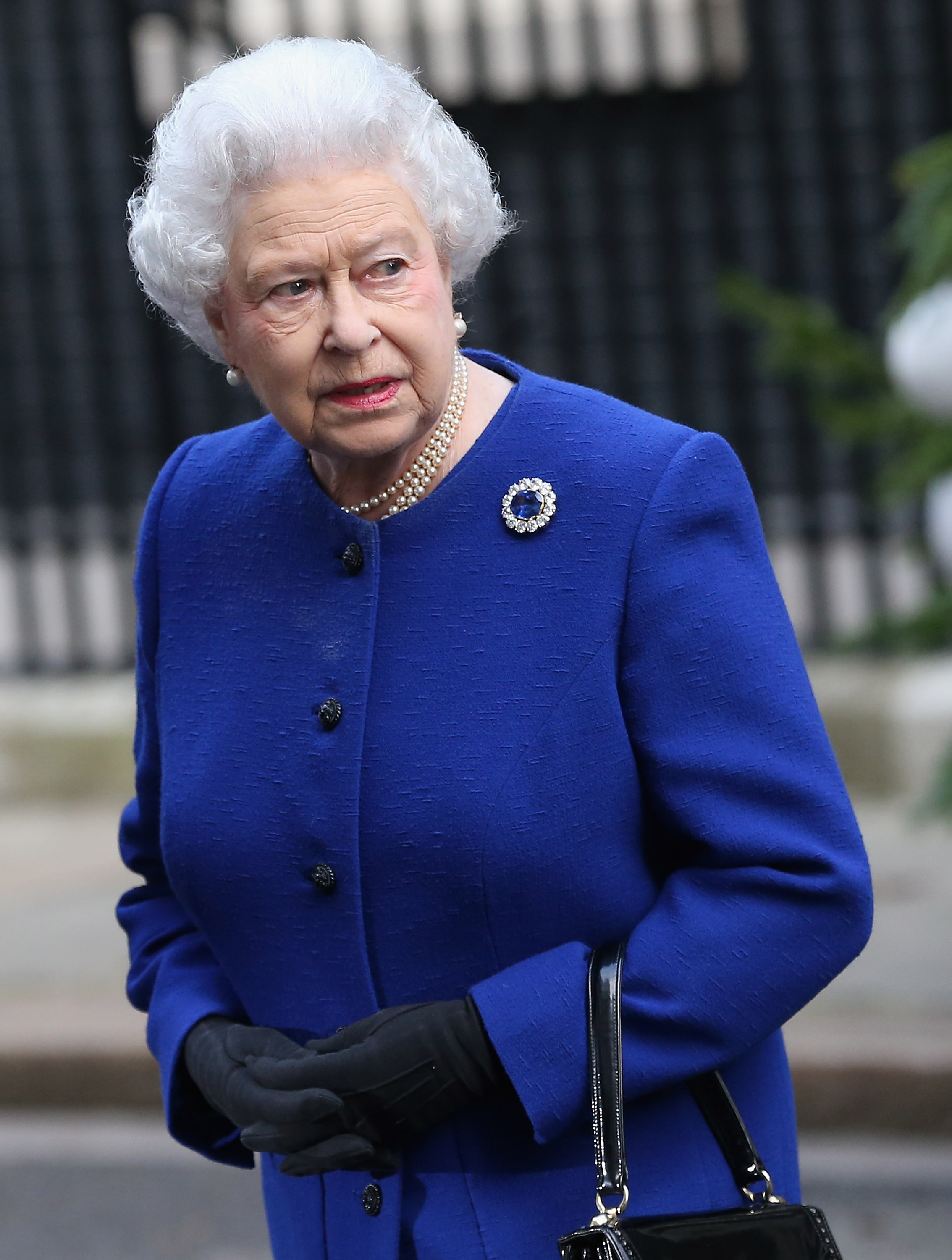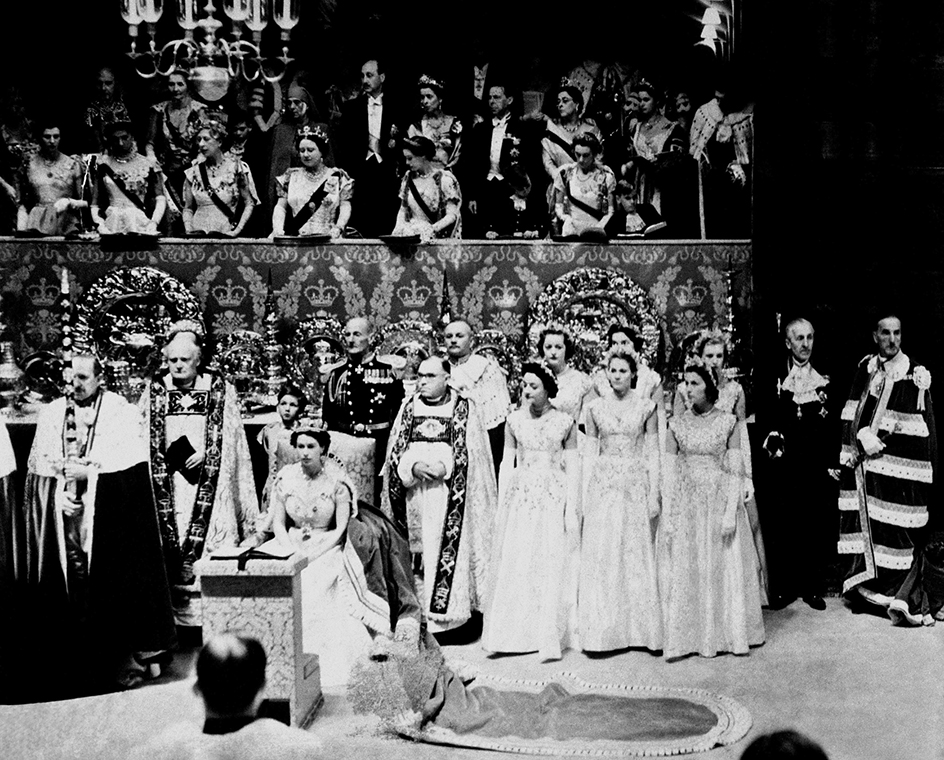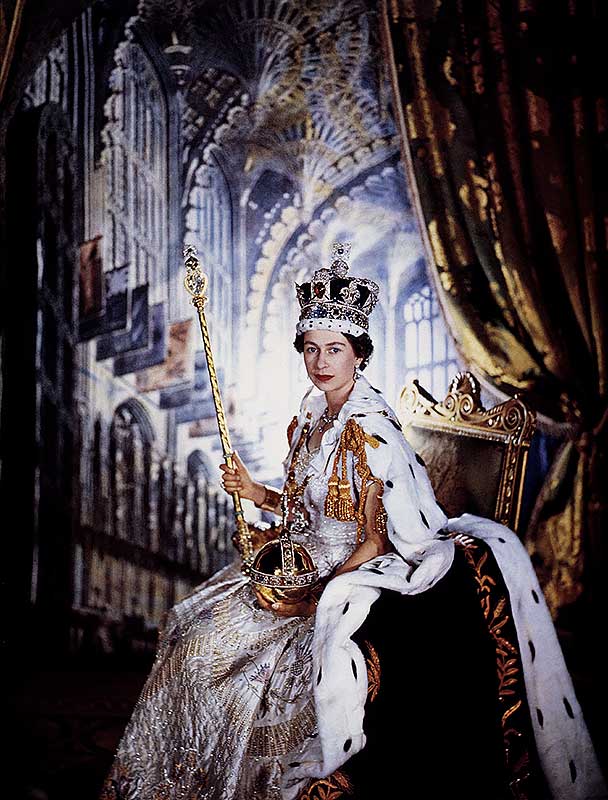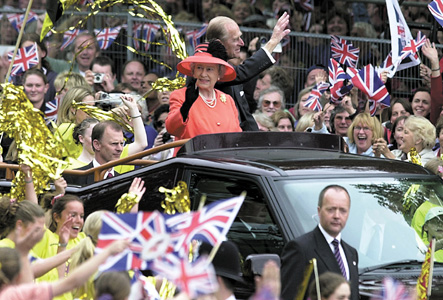Elizabeth II (1926-2022) was the queen of the United Kingdom of Great Britain and Northern Ireland. She became queen when her father, King George VI, died in 1952, and she served until her death in 2022. Her 70-year reign was the longest in British history. As a constitutional monarch, Queen Elizabeth was formally head of state in the United Kingdom. But she had no power over what the British government did. Laws were formally enacted in the name of the queen, but their content was the responsibility of the government.
Early life.
Elizabeth Alexandra Mary was born in London on April 21, 1926. Her father was the Duke of York, second son of King George V. Her mother—Queen Elizabeth, the Queen Mother—was the former Lady Elizabeth Bowes-Lyon, the daughter of a Scottish earl.

Elizabeth’s father became king in 1936 after his older brother, King Edward VIII, gave up the throne to marry a divorced American woman. This event greatly changed the course of 10-year-old Elizabeth’s life. It made her the heir to the throne, since George VI had no sons and she was the older of his two daughters.
Princess Elizabeth spent most of her childhood at Windsor Castle, in Windsor, near London. The castle is the British royal family’s main residence outside of London. Buckingham Palace, in London, is the family’s main residence. Princess Elizabeth and her sister, Princess Margaret (1930-2002), were educated at home by governesses. In March 1945, during World War II, Elizabeth joined the Auxiliary Territorial Service, a support branch of the military. She joined to train as a mechanic to repair military vehicles for the war effort. But Elizabeth served only until May, when the war in Europe ended.
Marriage and succession to the throne.
Princess Elizabeth married Philip Mountbatten, a British naval lieutenant and member of the Greek royal family, on Nov. 20, 1947. Her husband became Prince Philip, Duke of Edinburgh (1921-2021). When King George’s health began to fail, Princess Elizabeth and her husband began to undertake more public duties. The king died on Feb. 6, 1952, and Princess Elizabeth succeeded him as the British monarch that day. The coronation of Queen Elizabeth II took place on June 2, 1953, in Westminster Abbey, London.

Duties.
After a general election, the monarch formally appoints the prime minister. In practice, this person is the leader of the majority party in the democratically elected House of Commons. The queen had a weekly meeting with the prime minister to discuss public affairs. The prime minister was not obligated to act on her advice, but often found it useful because of her many years of experience.

The monarch’s chief public role is to attend ceremonial state occasions and to represent the United Kingdom in visits throughout the country and the world. Queen Elizabeth traveled extensively. In the United Kingdom, she sometimes put ceremony aside and met informally with subjects. She hosted luncheons at Buckingham Palace, which were attended by people of many different walks of life.
The monarch is also head of the Commonwealth of Nations, an association of independent countries and other political units that have lived under British law and government. Queen Elizabeth had no authority in Commonwealth nations. She served mainly as a symbol of historical ties.
The royal family.
The queen and Prince Philip had four children. The children are King Charles III (1948-…); Anne, Princess Royal (1950-…); Andrew, Duke of York (1960-…); and Prince Edward (1964-…). The older of Charles’s sons, Prince William (1982-…), is the heir to the throne. The royal family’s surname is Windsor. However, in 1960, Queen Elizabeth announced that her descendants, except for princes and princesses, would bear the surname Mountbatten-Windsor.

The royal family has two country residences. One is Balmoral Castle in Grampian Region, Scotland. The other is Sandringham, an estate in Norfolk County, England. Queen Elizabeth enjoyed country life and breeding dogs and horses. She owned successful race horses.
Queen Elizabeth II died on Sept. 8, 2022, at Balmoral Castle, at the age of 96. Her son Charles, then Prince of Wales, became King Charles III. The queen’s death was mourned in the United Kingdom and throughout the world.
